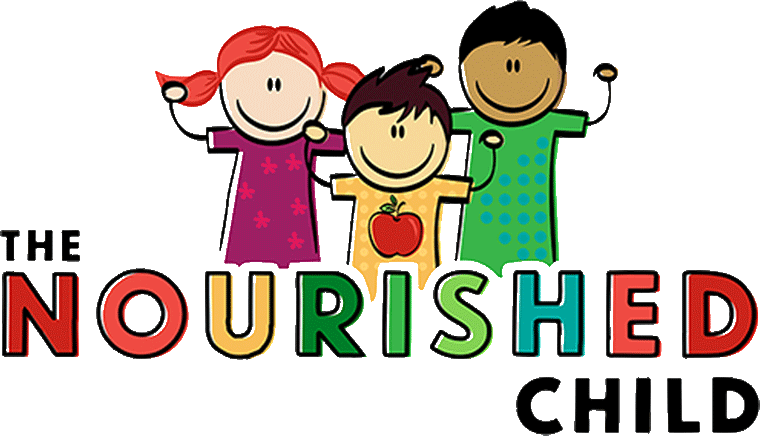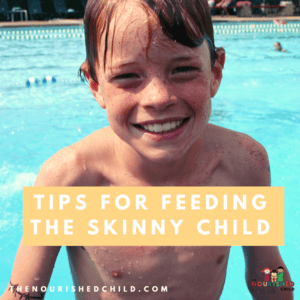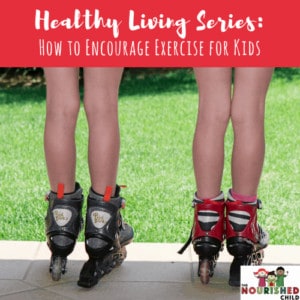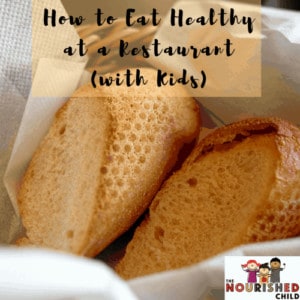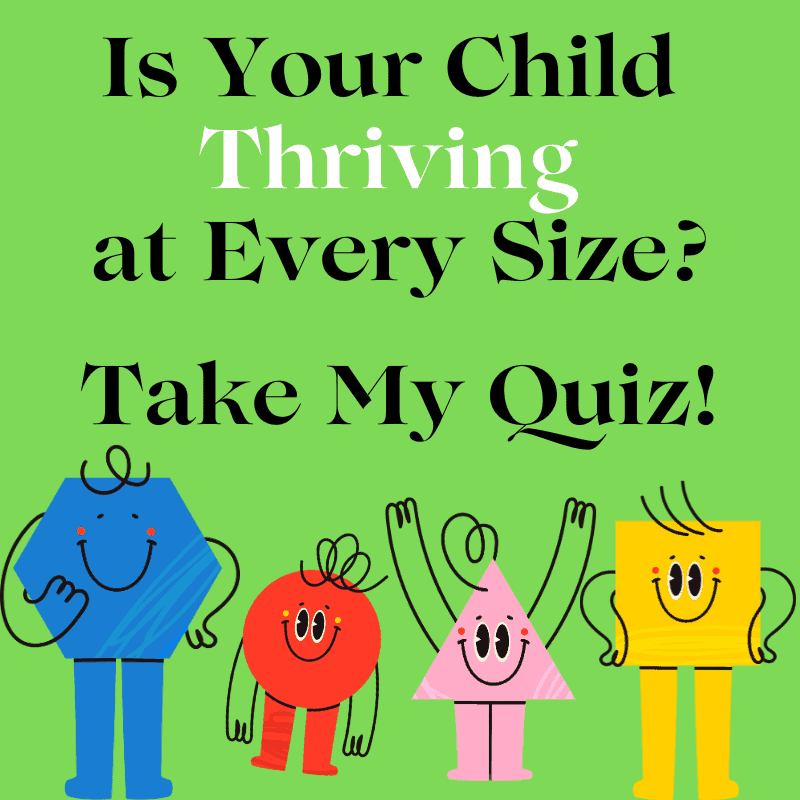Healthy Food Swaps for Snack Time
October 7, 2022
If you’re looking for healthier alternatives to some of your kid’s favorite snacks, keep reading for some healthy food swaps for your kiddo!
Are you concerned about your family’s snack habits?
Snacking gets a bad rap, but growing kids need to eat three meals and one to two snacks daily, depending on their age.
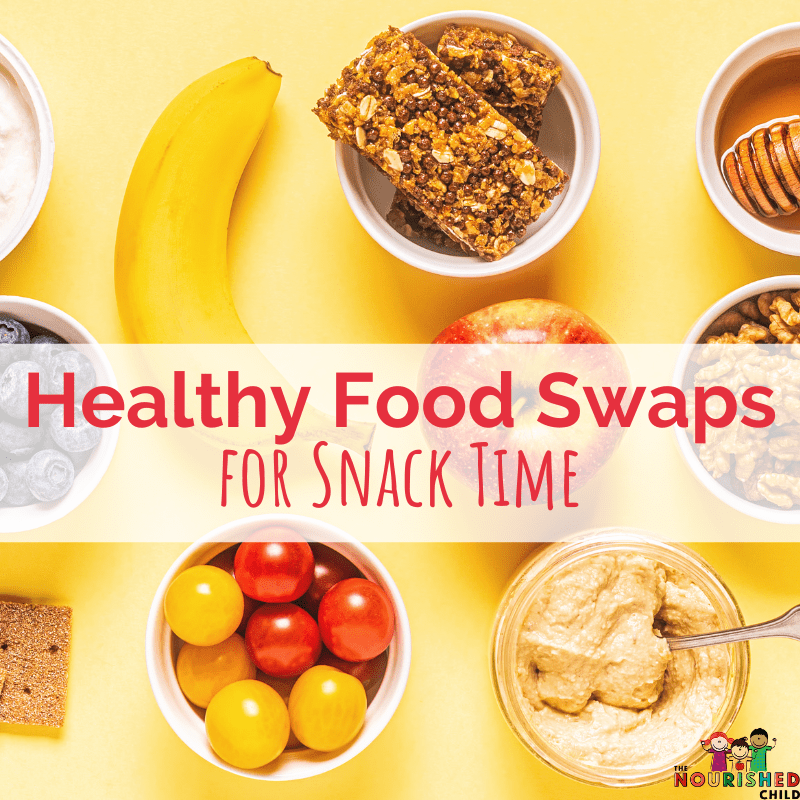
It’s not snacking that’s necessarily bad for kids, but the type of snack may be less nutritious than it could be.
Many popular kid snacks are ultra-processed and full of sodium and saturated fat.
It’s easy for families to get stuck in a cycle of stocking the pantry with snacks their kids love. Who doesn’t want to please their children by keeping their favorite foods in the house (especially if you have a picky eater)?
Don’t worry. You can make minor changes by swapping the same old snacks with “better for you” healthy snack alternatives.
Keep reading for healthy food swaps your kids will love!
Ultra-processed vs. a “Better for You” Snack
What’s the difference between an ultra-processed snack and a “better for you” snack?
Ultra-processed food contains multiple ingredients that have undergone multiple processes.
They’re often high in calories, added sugars, unhealthy fats, and sodium. They also tend to be low in fiber and essential nutrients.
In contrast, a “better for you” snack is typically made with whole or minimally processed ingredients that are high in fiber and nutrients like protein, calcium, and vitamin D.
Some snack packages have health claims like “whole grain,” “fortified,” or “light,” which make a processed snack appear to be a healthy option.
The FDA recently proposed new criteria to label food as “healthy.” The food product needs to contain a “meaningful amount” of at least one food group and meet the recommended limit of saturated fat, added sugars, and sodium.
The Dietary Guidelines for Americans recommends avoiding added sugars for little ones younger than two years old and limiting added sugars to 10% of the daily diet for older kids.
For sodium, you want to keep that below 10% of the DV (daily value) per serving, which is 230mg per serving.
What does all of this mean for parents?
As a children’s nutrition expert, I recommend parents double-check nutrition labels for saturated fats, sodium, and added sugars.
Look for balanced snacks that contain at least one of the five food groups: fruits, vegetables, grains, dairy, and protein foods.
Let’s dive into a few of my favorite healthy food swaps at snack time.
Healthy Snack Swaps for Kids that are Good to Eat
You might be worried your child will notice the changes you make with snacks and reject them.
Let little ones feel like they have some control over what they’re eating and get them involved.
It’s best to give a child a choice between a couple of options, rather than asking them, “What do you want?” That way, you avoid indecision or your kiddo asking for something that you don’t want them eating or isn’t on the menu.
Here are some healthy snack alternatives for kids (and they’re easy for you, too!):
Instead of sugary cereals, choose…
Whole grain cereals or homemade granola.
Cereals are a popular toddler snack. Look for whole-grain cereals that are low in sugar.
They’re a great source of fiber and a healthier option than cereals loaded with added sugar.
Cheerios is a popular whole grain cereal that babies love and use their pincer grasp to pick up.
Check out my list of low sugar cereals for children.
Instead of Goldfish crackers, choose…
For the same crunch, air-popped popcorn, unsalted pretzels, whole grain crackers and cheese, or veggies with dip are excellent swaps.
While Goldfish crackers are baked and lower in sodium than other salty snacks, kids can get hooked on them.
Make sure you’re getting variety on board.
Air-popped popcorn is a whole grain snack that’s full of fiber. It’s also low in calories and has no saturated fat.
(You probably know that popcorn is a choking hazard, so skip this snack for young toddlers.)
Instead of “fruit” flavored snacks, choose…
Fresh fruit is a healthier option that’s full of vitamins, minerals, and fiber.
Dried or packaged fruit in cans or cups are also good choices compared to sugary snacks.
Look for packaged fruits in natural juices instead of syrup.
Fruit snacks are often made with sugar and artificial flavors.
Instead of granola bars, choose…
Homemade granola bars, energy balls, or trail mix only require a few ingredients you probably have in your pantry.
Trail mix is still an option for kids with a nut allergy. Just leave out the nuts. You can add shredded coconut for a little flavor and crunch.
Many granola bars are high in sugar and are no better than a candy bar.
I compared a few granola bars brands and found some good options out there if you need a quick or shelf-stable snack.
Instead of cookies, choose…
Fruit muffins or homemade energy balls.
Energy balls are a no-cook, healthy snack you can make at home with simple ingredients. Look for recipes that use dried fruit such as Medjool dates as the sugar.
Dried fruits are high in sugar, but they’re also high in fiber and vitamins, unlike white table sugar.
Cookies are nice occasionally, but make sure you’re swapping for nutritious snacks also.
Instead of potato chips, choose…
Roasted chickpeas, bean bites or homemade veggie or baked sweet potato chips.
Roasted chickpeas and baked veggies are a healthy salty snack alternative that’s high in fiber. And chickpeas provide protein, too.
Potato chips are fried and contain quite a bit of fat.
Instead of sugar-sweetened drinks or juice, choose…
Water, water infused with fruit, or make homemade soda with seltzer or sparkling water and a splash of juice for flavor.
This helps kids transition from sugar-sweetened beverages to water.
Fruit juices are often high in sugar and calories. Even 100% juice without added sugar is very high in sugar.
The American Academy of Pediatrics recommends limiting juice intake for kiddos and avoiding altogether for kids younger than a year.
The recommended limits for children are:
- 1 to 3 years old: 4 oz of 100% juice
- 4 to 6 years old: 4 – 6 oz of 100% juice
- 7 to 18 years old: 8 oz or 1 cup of the total recommended 2 ½ cups daily fruit serving
Instead of sugary desserts, choose…
Pumpkin chocolate chip muffins, Chex Mix, or make-your-own yogurt parfaits with fruit and granola.
Yes, sugary desserts are a source of sugar, but they don’t have to be eliminated. Don’t be too rigid and restrictive with desserts.
You can find dessert options that also contain nutrients.
For example, yogurt is a nutritious snack that’s an excellent source of protein, calcium, and probiotics.
Instead of ice cream, choose…
Frozen yogurt or homemade fruit bars.
Ice cream is high in sugar and calories. Frozen yogurt is a lower-calorie option that’s still creamy and delicious.
Fruit bars are made from fresh fruit puree. They’re packed with antioxidants and satisfy a sweet and cold snack craving.
If you don’t have popsicle molds, look for healthier store-bought popsicles.
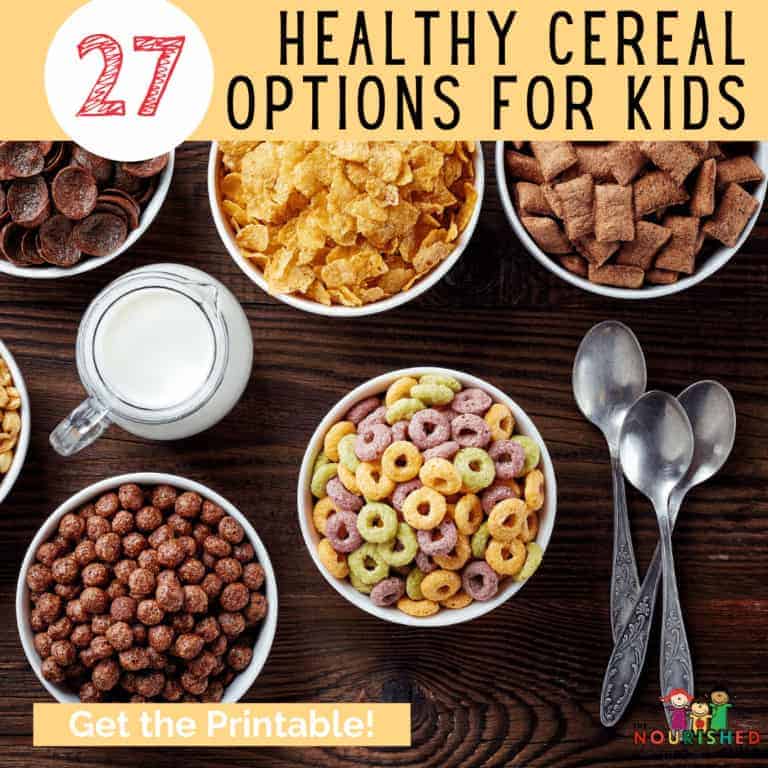
Send Me The 27 Healthy Cereal Options for Kids!
Swaps for Kids at Snack Time
You can help your kids make healthier choices without sacrificing taste or fun by making a few simple changes.
But it’s also important to let them have treats.
Balance is key!
Look for healthy food swaps that don’t require a lot of prep or cooking, so you’ve got nutritious snacks available in the house.
